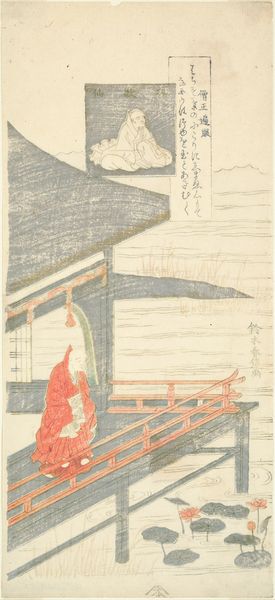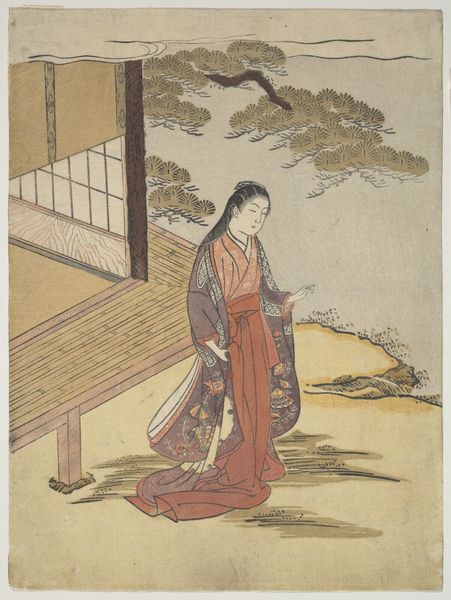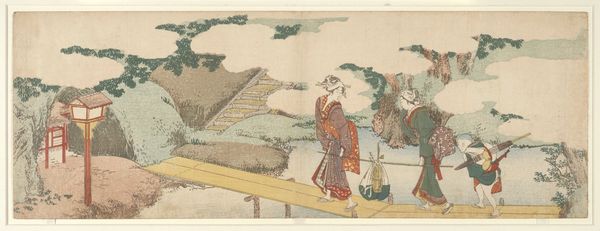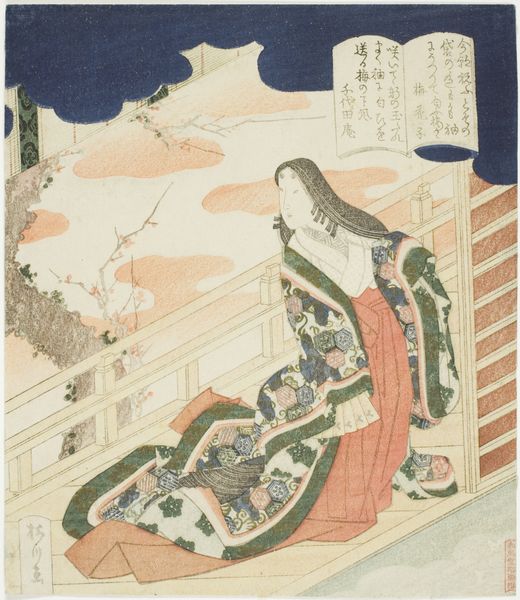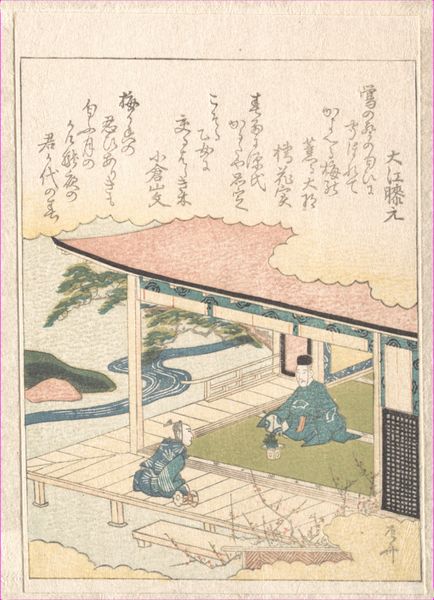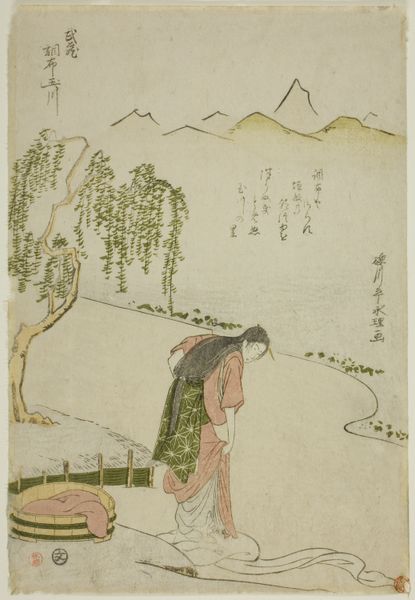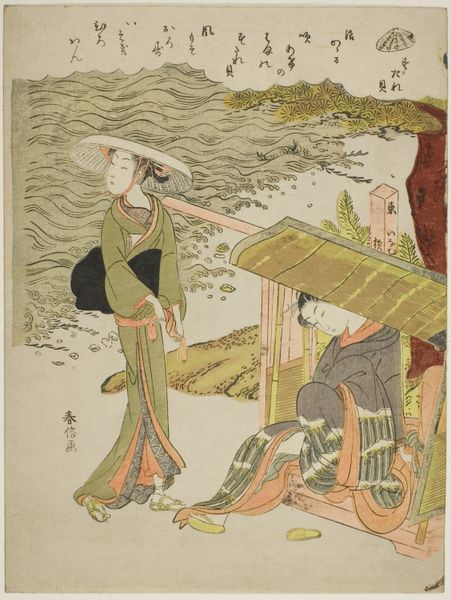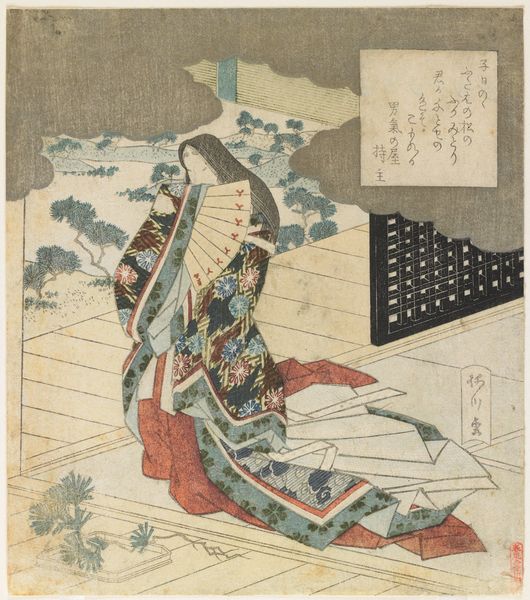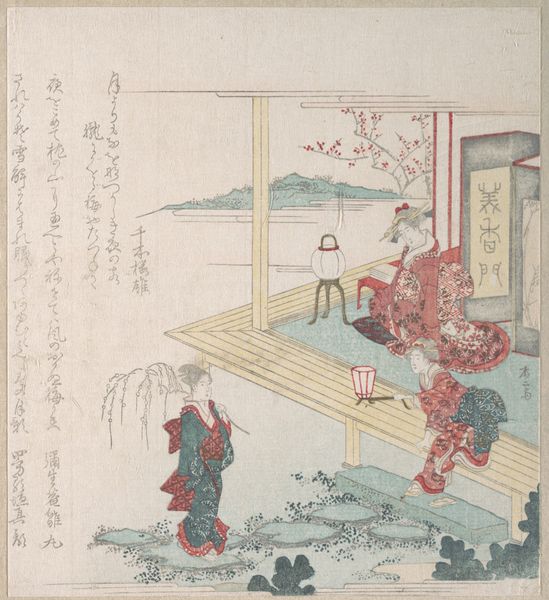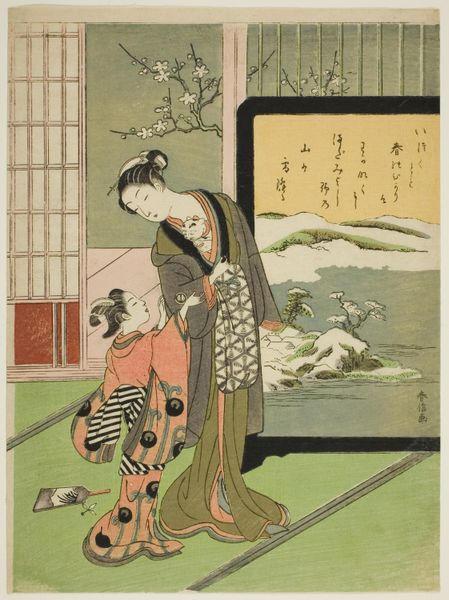
The Poet Ise Looking Up at a Flock of Returning Geese, from an untitled series of eight views c. early 1760s
0:00
0:00
print, paper, watercolor, woodblock-print, pencil
# print
#
asian-art
#
landscape
#
ukiyo-e
#
paper
#
watercolor
#
coloured pencil
#
woodblock-print
#
pencil
Dimensions: 12 1/4 × 5 3/8 in.
Copyright: Public Domain
Editor: This is Kitao Shigemasa's "The Poet Ise Looking Up at a Flock of Returning Geese," a watercolor woodblock print from the early 1760s. There's a sense of quiet melancholy about it. What do you see in this piece? Curator: I see a powerful meditation on gender and representation. Shigemasa positions the female poet Ise not simply as an observer of nature, but as a figure deeply connected to the social and emotional landscape of her time. Editor: Can you expand on that? I hadn't considered the gender aspect. Curator: Absolutely. Consider the gaze: Ise is looking *up*, towards the geese and the moon. This contrasts with many traditional representations of women, which often confine them to the domestic sphere, directing their gaze *inward*. Shigemasa gives her agency through this act of looking, almost suggesting that poetry creates liberation. And, perhaps most profoundly, who decides what makes 'high' art versus what is considered decorative? It has traditionally been male European voices... Editor: That’s fascinating, I never thought about it in that way! Is this upward gaze repeated throughout Shigemasa’s body of work? Curator: Often, but also consider what the artist chooses *not* to show. We don’t see the poet’s entire face; rather, Shigemasa allows her emotions to be deciphered. I think this gives the work much of its powerful presence. Editor: Now that you point it out, I am picking up on it! It definitely changes my understanding of the artist's goals and impact. Thank you. Curator: You're welcome. Thinking critically about the societal structures framing our understanding is what brings art to life.
Comments
No comments
Be the first to comment and join the conversation on the ultimate creative platform.

